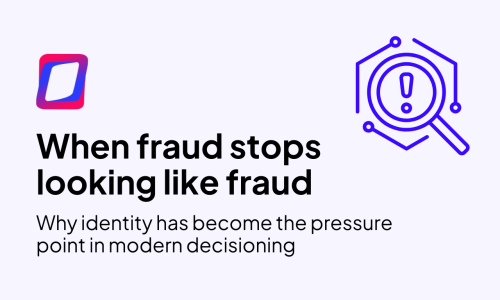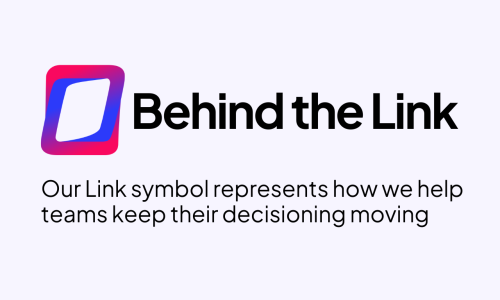Why Credit Risk Management is Important for Credit Unions
Credit Union Risk Management Software
As a financial institution, credit unions must use risk management software. Effective risk management software can help a credit union grow its revenue while improving the premier customer experience most credit unions have cultivated and that their members have come to expect.
What are the internal and external risk factors that concern credit unions?
Internal risks for credit unions can include fraud, data breaches, legal noncompliance, injuries to staff or visitors, etc, and should be the focus since they can be controlled.
External risks can include exchange rates, interest rates, natural disasters, and loss of funds due to theft, which typically cannot be controlled.
While it may be beneficial for a credit union to have a strategy to deal with external risks, it is unlikely that any risk management will completely nullify all these external risks.
What are the major risks facing credit unions today?
According to the National Association of Federally-Insured Credit Unions (NAFCU), there are 7 types of risks credit unions can expect to manage. Properly managing risks is a critical aspect of compliance and financial success. In an extremely risky industry, credit unions should invest extra resources to ensure a sound risk management process. The 7 major risks include:
- Credit risk
- Interest rate risk
- Liquidity risk
- Transaction risk
- Strategic risk
- Reputation risk
- Compliance risk
Strategies for Credit Risk Management
When it comes to risk management strategies, a credit union should have a strategy (even if it’s not the most effective) instead of having no strategy. Smaller credit unions may be able to utilize simpler, more manual strategies, but risk management software is recommended for all organizations, no matter the size. Here are two strategies credit unions can use for risk management:
#1. Key Risk Indicators
KRIs (Key Risk Indicators) can be tracked and reported to indicate early risk and exposure warning signs. If your KRIs show a warning sign, it should be investigated immediately to maximize efficiency and reduce potential risks. KRI data should be collected regularly to maximize results. For example, KRIs could show how many loans a credit union has originated in the past. This KRI metric could help credit unions determine the appropriate mortgage loan amount depending on available capital. While KRIs can be effective and useful, they require careful attention, as any minor oversight could lead to increased exposure and potential setbacks in performance.
#2. Risk Management Software
Implementing risk management procedures can be costly, regardless of your strategy or strategies. When selecting the best risk management strategy, you should focus heavily on the money it could save or make you overall. Risk management software will likely be more expensive initially but most effective in the long run. In addition to reducing risk for the credit union, it can also enhance the customer experience.
GDS Link’s risk management software can utilize various data and analytics to help credit unions lend more and profit more while reducing risks. The software can be used for marketing and lead generation, pre-qualification, pre-screen, monitoring, analytics, data, decisioning, and more while being easily implemented, self-managed, and self-tested.
Elements of Effective Credit Risk Management
Whether or not a credit union uses risk management software, management should be familiar with the elements. Let’s take a look at the elements:
- Know your customer: Knowing your customer should start with proper identification verification within the lending process. Once you have established a relationship, this should shift to a focus on collecting information so that your systems know the normal behavior of a member. Overall, the more you know about a member, the better you can position your credit union as a financial advisor and provider of products.
- Know the non-financial risks: Besides a creditworthiness assessment, you should consider qualitative criteria. Qualitative criteria can include local competitors or market share.
- Know the numbers: Before approving a loan, credit unions should know how the funds will be used and how they will be repaid. Understanding these factors can allow credit unions to assess risk and package the final offer.
Once these elements are complete, credit unions can put a price on the deal and move forward with closing the deal. These elements should allow credit unions to determine better the risk of a particular lending decision. The less risk, the lower the interest rate should be.
Importance of Credit Risk Management for Credit Unions
A well-rounded and fully developed risk management plan will deliver much value and benefits to a credit union. Some major benefits include providing staff and members with a safe environment and facility while protecting property, assets, time, and income. In addition, risk management plans can reduce legal liability and the threat of potential litigation. Most credit unions cannot afford to overlook risks, thus justifying the importance of an effective risk management plan since they strengthen the stability of overall operations while supporting a credit union’s success.
Risk management should be a part of all strategic business plans for credit unions. In today’s world, customers are seeking faster service and loan decisions. As a result, credit unions must provide advanced technology and online services to satisfy their members. Our current market is struggling with uncertainty making it more challenging to determine how to view risk. While companies must generate revenue to survive, credit unions want to avoid elevated-risk loans. Alternatively, credit unions must also fund loans to keep their doors open. So how do you effectively manage risk given the current market and economy? Implement an effective risk management software that will optimize performance and automate processes to conquer the risk vs. reward ratio, thus allowing credit unions to expand their existing customer base while increasing revenue.
Improving efficiency and revenue can benefit the credit union brand and company. GDS Link provides advanced credit risk management software for credit unions. Those using GDS Link software can turn data into decisions in seconds while managing risk. Click the button below to learn more or schedule a meeting with a Solutions Specialist.
Learn more about GDS Link’s credit risk management for credit unions.
Related Risk Management Articles
-
- Benefits & Risks of Mobile Banking
- Risk Management & Data Analytics for Small Businesses
- Top Major Challenges of Credit Risk Management in Banks
- Credit Risk Scorecard Model Development, Monitoring & Reporting
- Risk Analytics Foundational to Broad Financial Services Innovation
- What Are The Different Types of Credit Risk
- Why Credit Risk Management is Important for Credit Unions
Recent articles

When Fraud Stops Looking Like Fraud
Read article
Behind the Link
Read article





